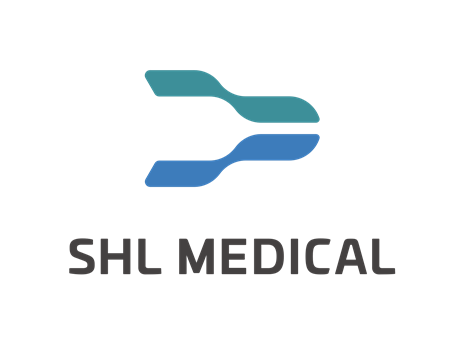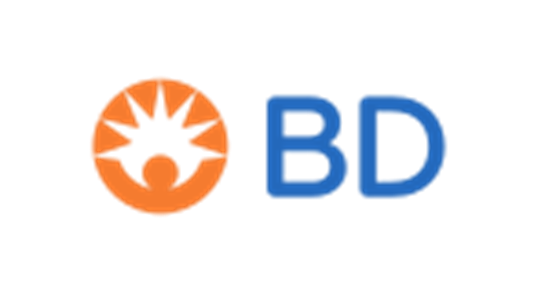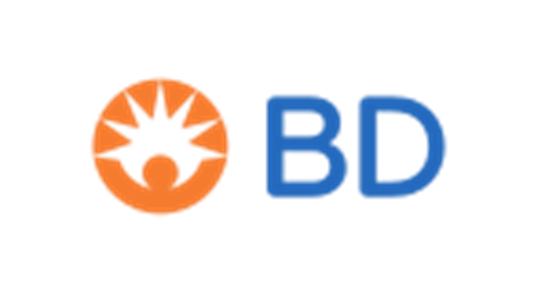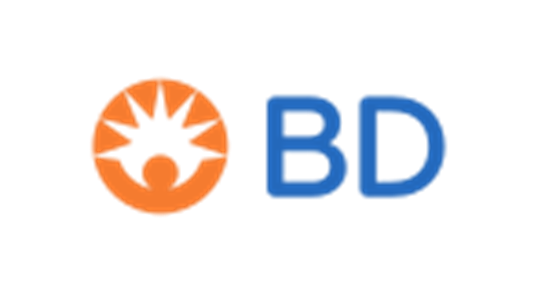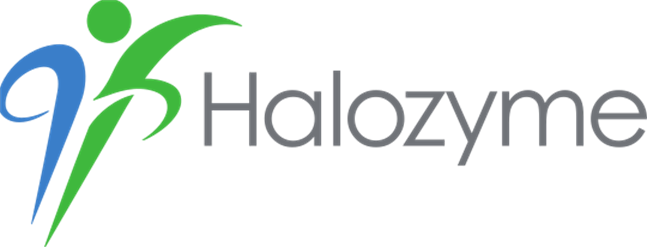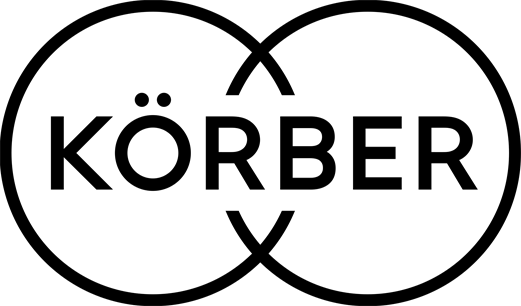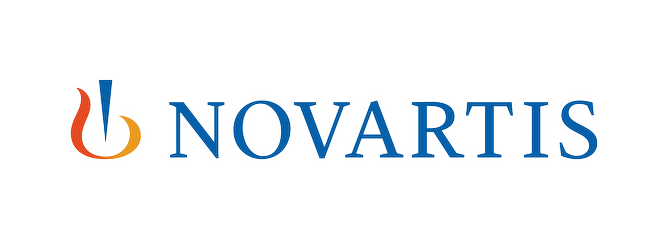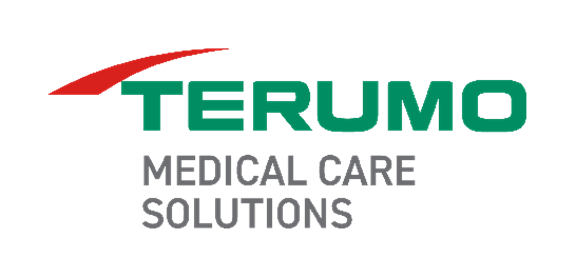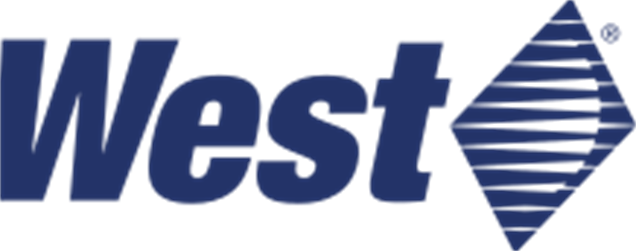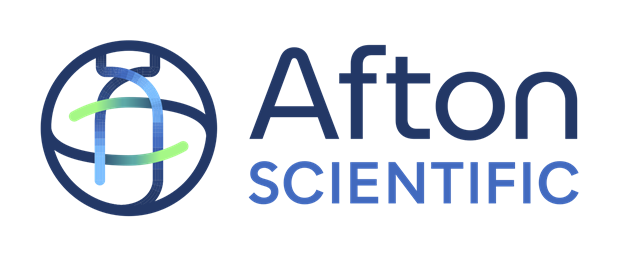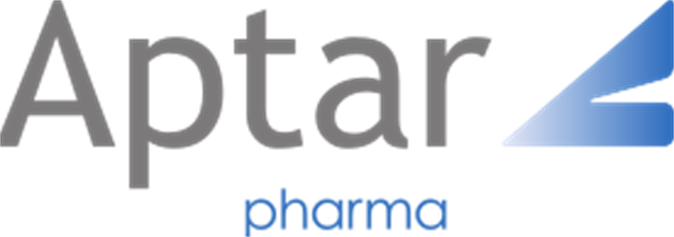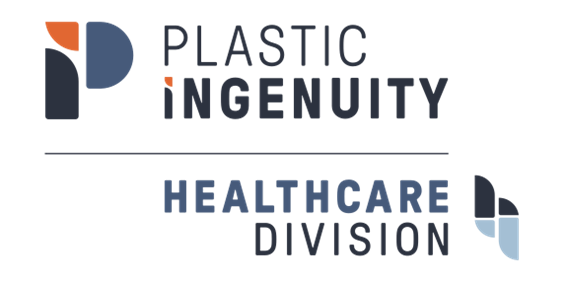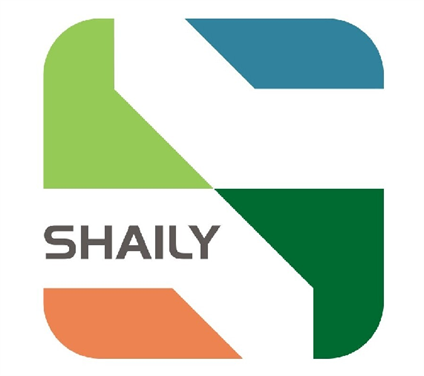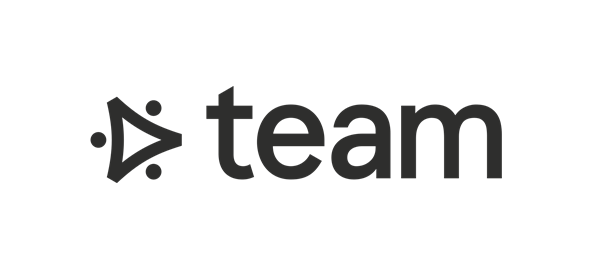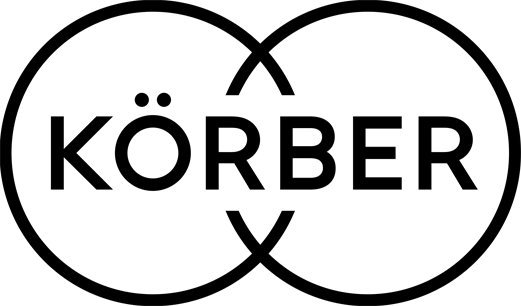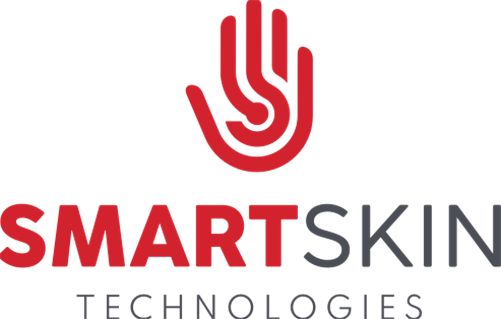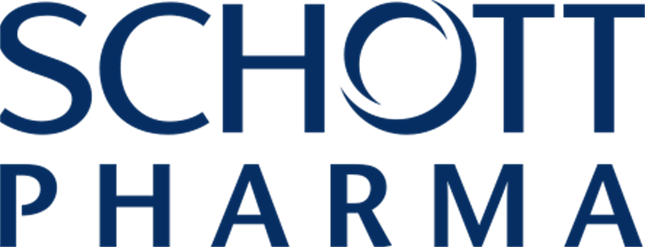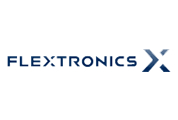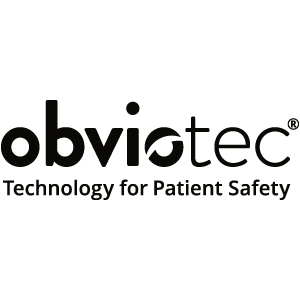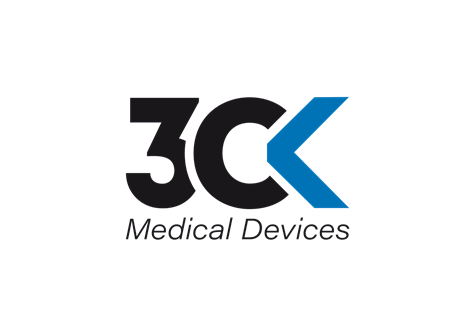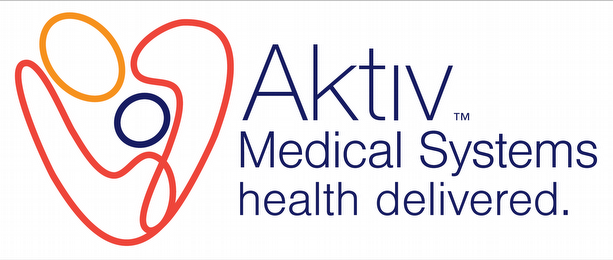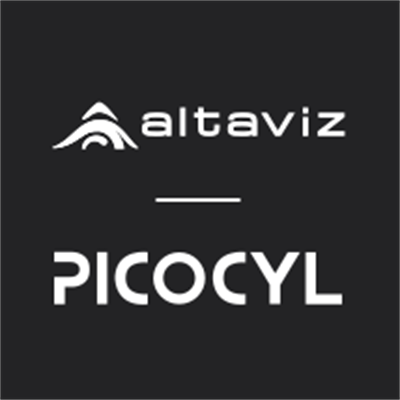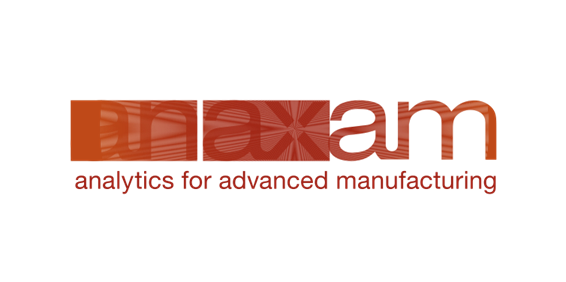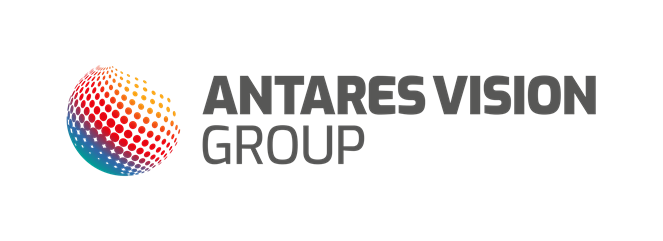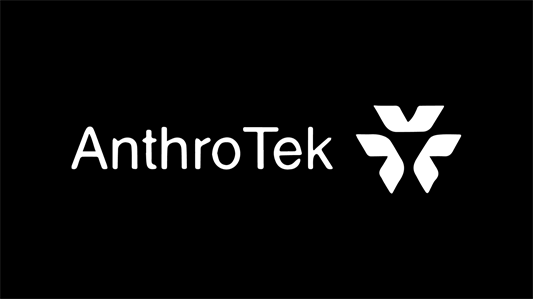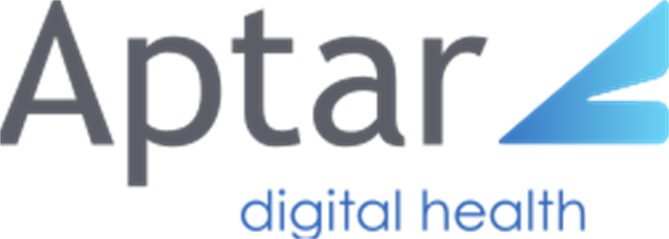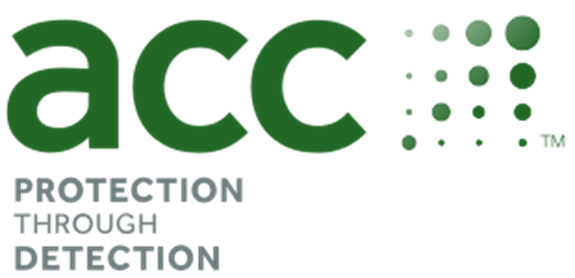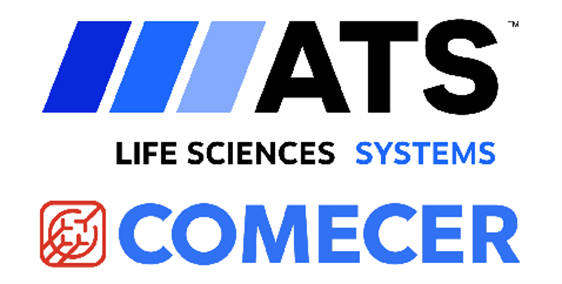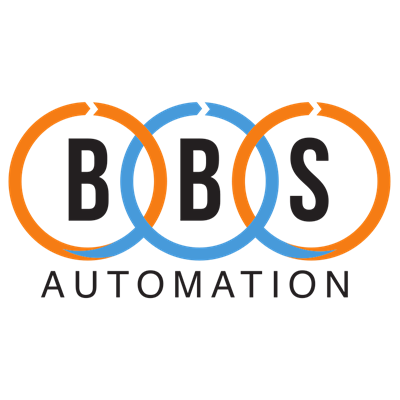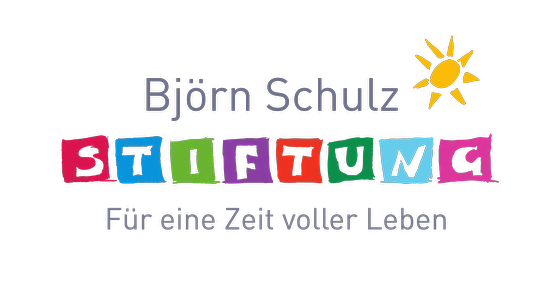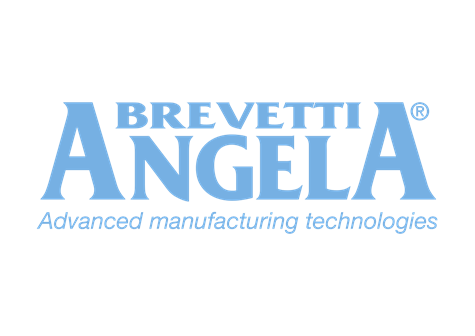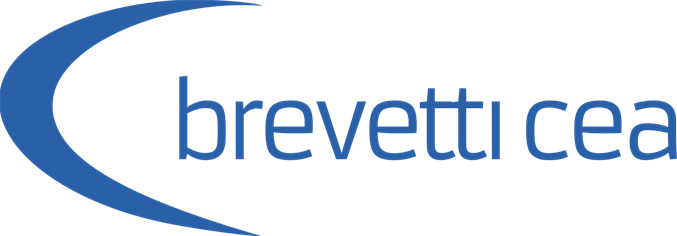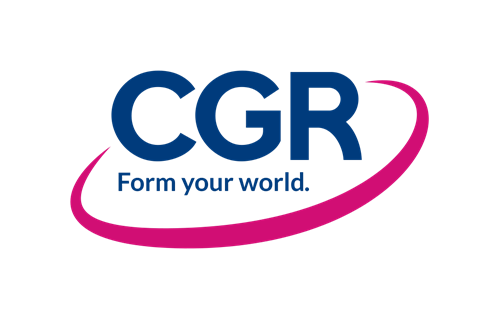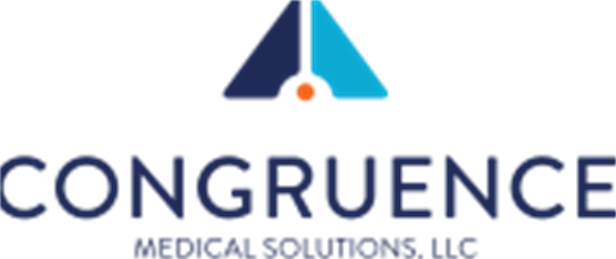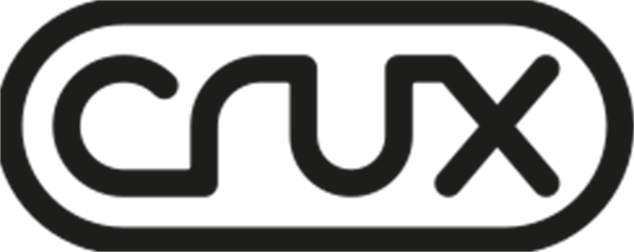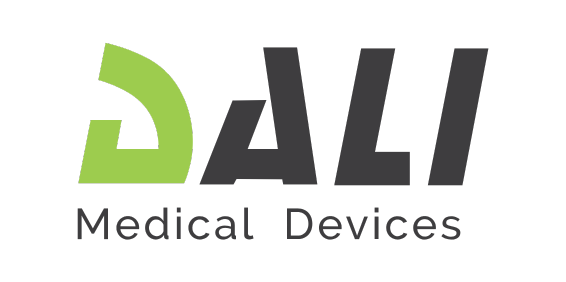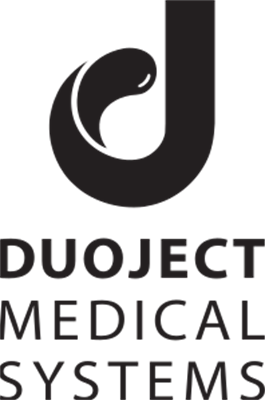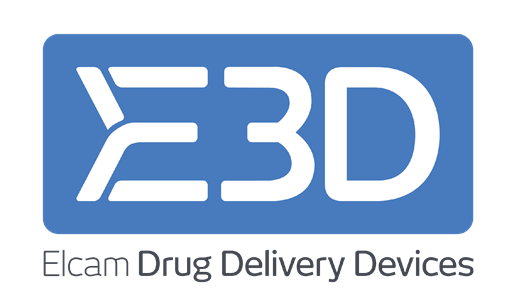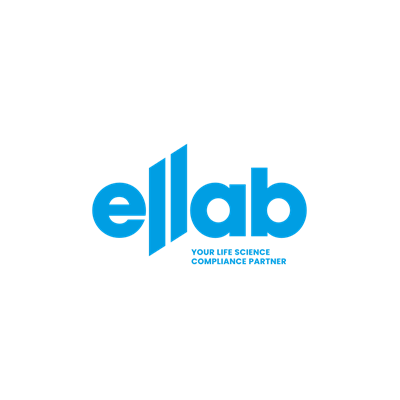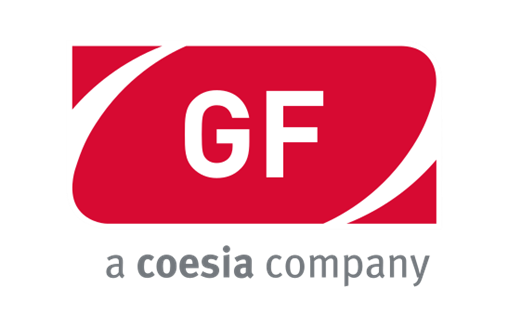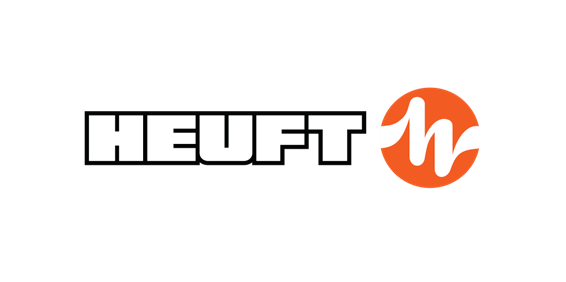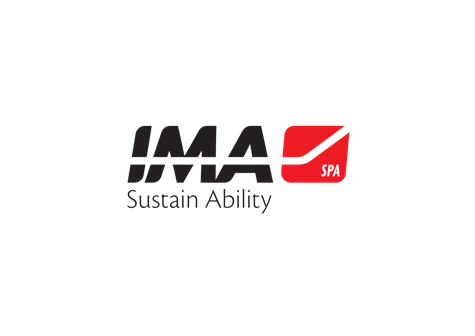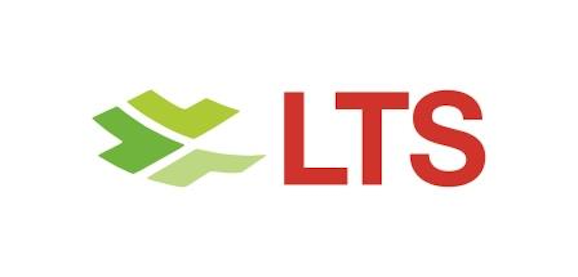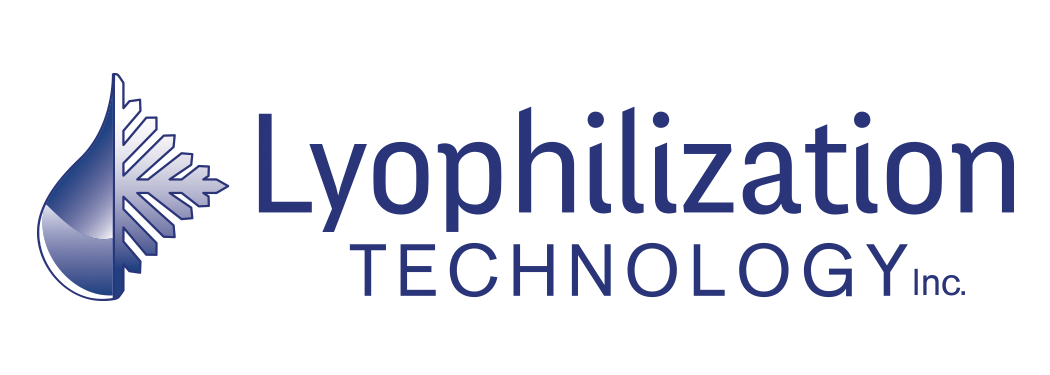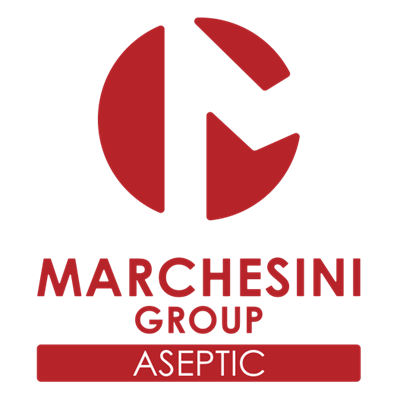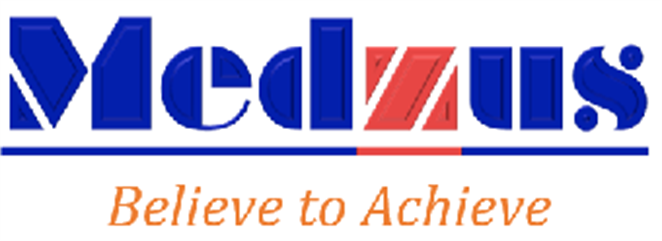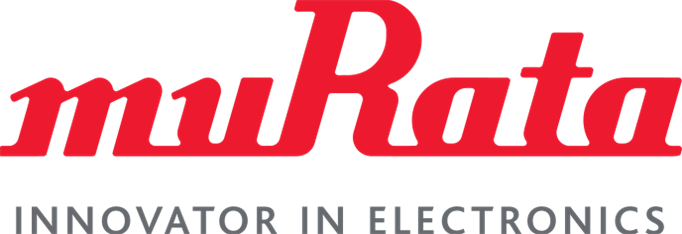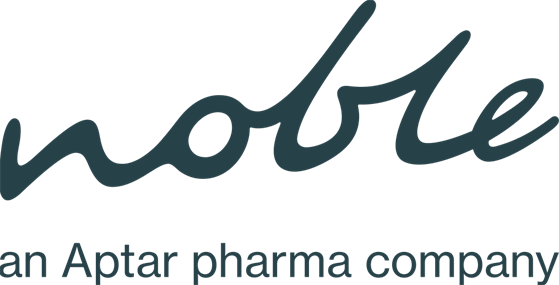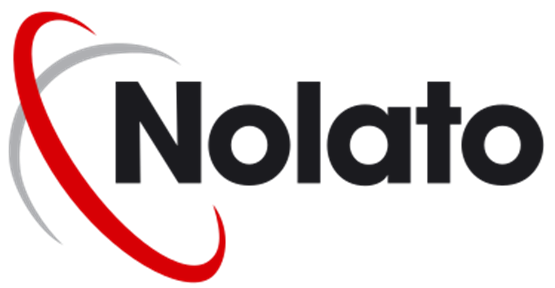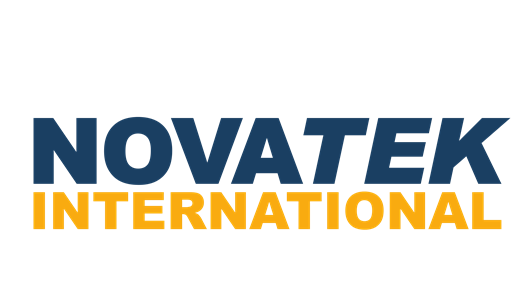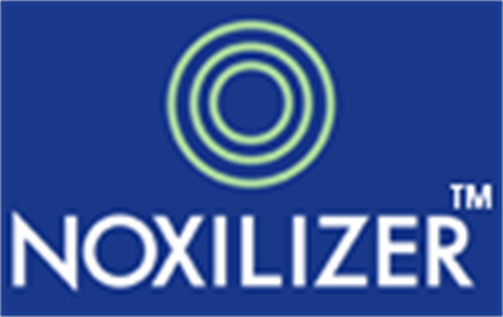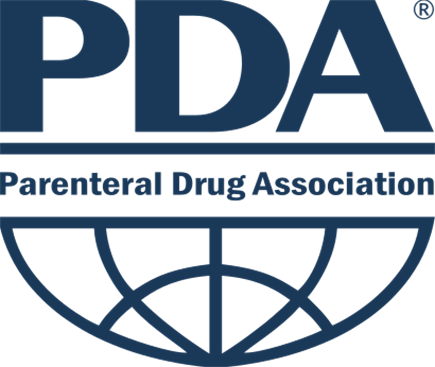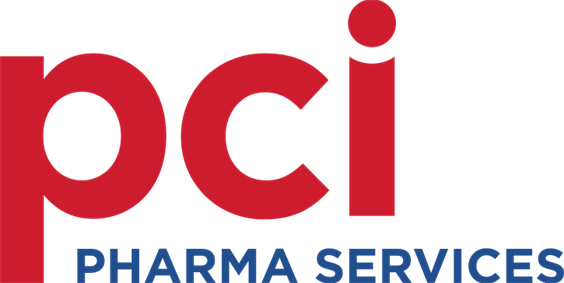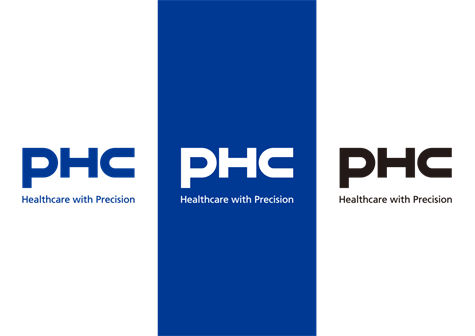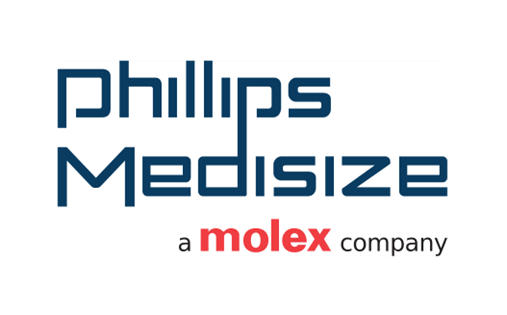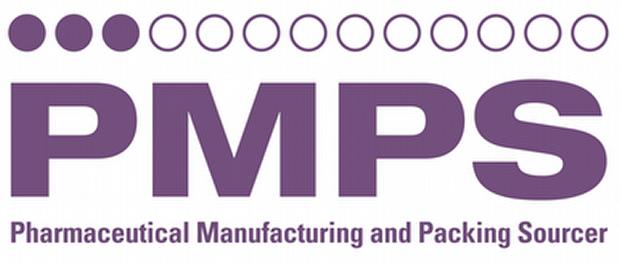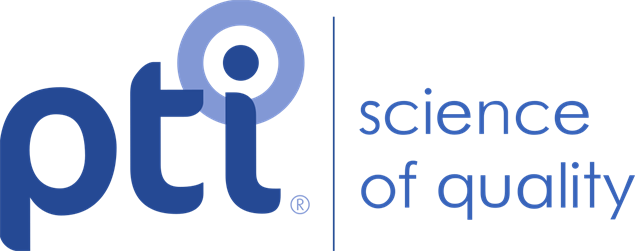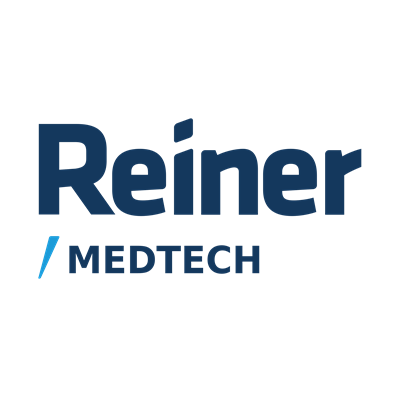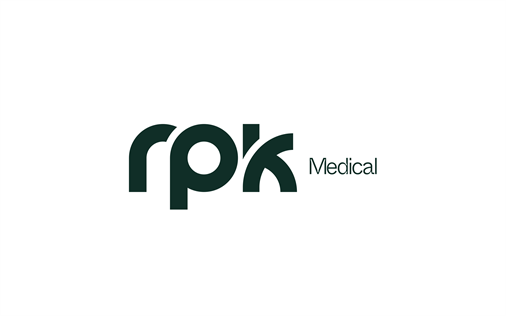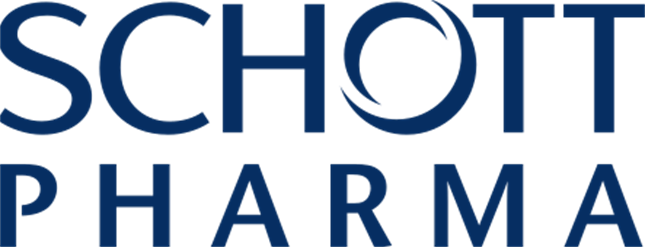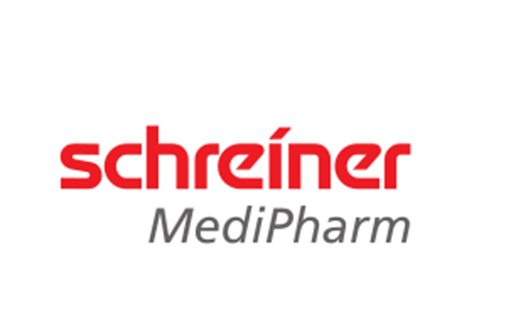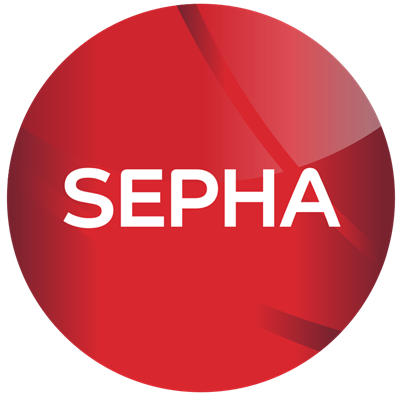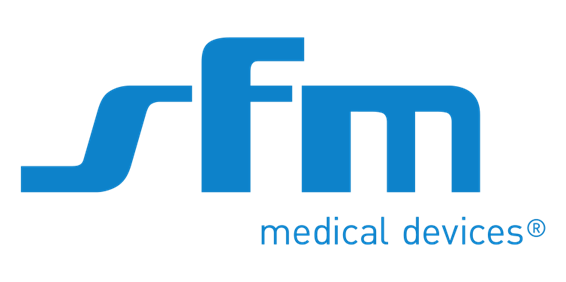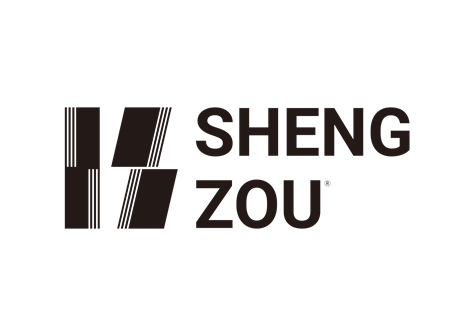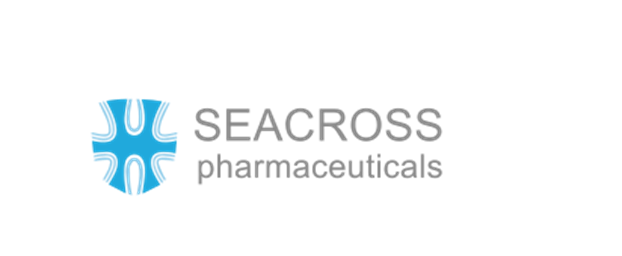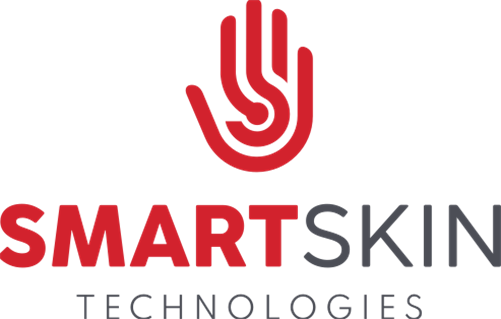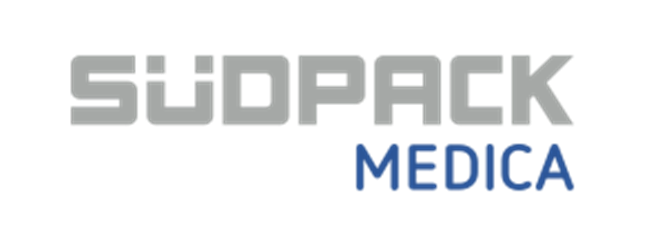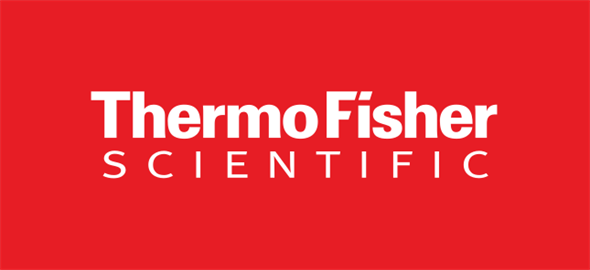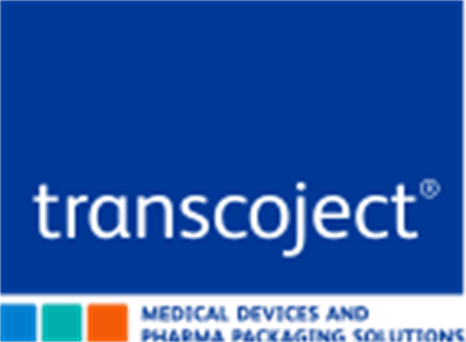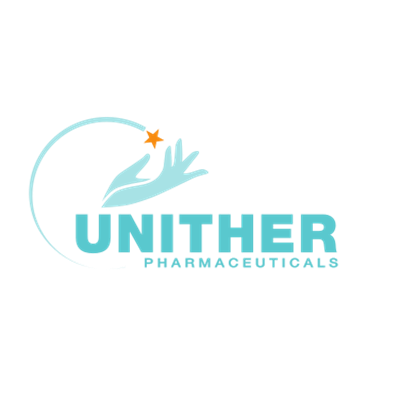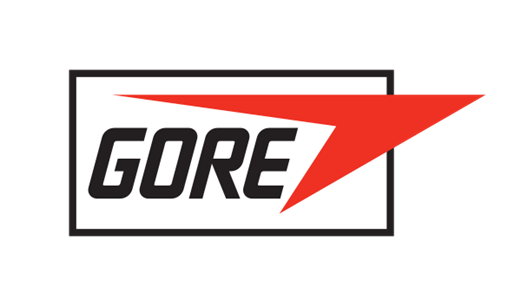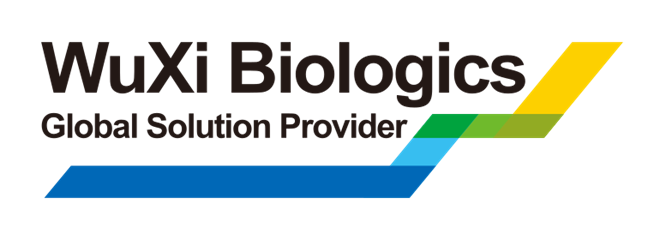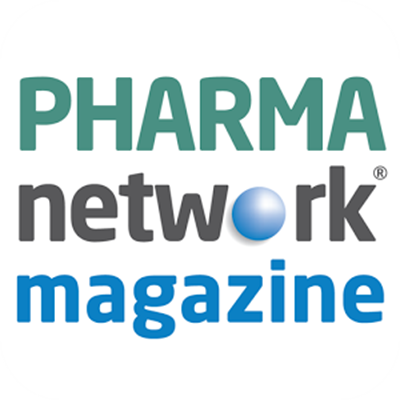
PDA Universe of Pre-Filled Syringes and Injection Devices Conference 2025 - Archived
Shaping the Drug Delivery Ecosystem
Become a Sponsor and/or Exhibitor
Registration Options
Individual Registration
Group Registration
Archived Event Notice
This event has passed. To view current and future events, please visit the Global Event Calendar.
Shaping the Drug Delivery Ecosystem
Join us at the PDA Universe of Pre-Filled Syringes and Injection Devices Conference 2025 scheduled to take place on 21-22 October 2025 in Vienna, Austria, a city renowned for its rich history, elegance, and cultural heritage. This year’s theme, Shaping the Drug Delivery Ecosystem, explores the intersection of science, technology, patient experience, and sustainability in injectable combination products.
The program opens with the PDA Drug Delivery Innovation Award and a powerful plenary session featuring perspectives from patients and healthcare professionals. These keynotes will highlight the importance of designing solutions that are not only clinically effective but also patient-centric. Expert presentations will explore how pharmaceutical companies are responding to the evolving demands of combination product development and how evaluating drug and device deliverability - from the molecular scale to the patient experience - can drive meaningful innovation.
Key Topics
- User Engagement & Digital Health: Leveraging digital tools to enhance usability and adherence
- Advanced Delivery Systems: Large-volume injections, wearable devices, and new platform technologies
- Smart Testing & Automation: Integrating AI, automated visual inspection, and usability studies
- Sustainable Innovation: Strategies for eco-friendly packaging, device reuse, and lifecycle management
The program transitions into dynamic afternoon parallel session tracks that cover a wide range of practical and future-focused topics. Attendees will gain insights from real-world case studies and data on device usability, smart tech integration, needle clogging challenges, and AI-powered testing. Whether it’s about improving self-injection experiences or advancing sustainability strategies, the content is curated to offer tangible impact and foresight.
A vibrant exhibition hall will offer opportunities for discovery and networking. Leading solution providers will showcase the latest innovations in injection devices and packaging. For the first time, emerging startups will present focused pitches, offering a glimpse into the next generation of drug delivery. Complementing these are the well-established Tech Talks and guided poster walks that invite direct interaction and dialogue throughout the event.
Why Attend?
- Premier Forum: A platform for knowledge exchange and cross-industry dialogue
- Innovative Perspectives: Real-world case studies and cutting-edge tech demonstrations
- Unmatched Networking: Engage with industry leaders, innovators, and peers in an inspiring setting
A major highlight is the official networking event on the opening evening. This year’s theme, 'PDA Goes Rockabilly vs. Viennese Opera Ball', promises an unforgettable evening blending classical elegance with vintage rock and roll flair. It’s the perfect setting to continue conversations, make new connections, and enjoy a vibrant cultural experience with colleagues and industry friends.
We look forward to welcoming you to Vienna for an engaging and impactful event.
See you in October 2025!
Sincerely,
The Co-Chairs
Theresa Bankston, BD
Jakob Lange, Ypsomed
Program Highlights
The agenda preview is live! Check it out now and secure your spot by registering today.
Agenda
Discover What's Happening Each Day
(Note: The file may take a moment to download depending on your connection.)
CEST Daylight Time (UTC +2:00)
-
Registration Open
Foyer X4
-
Welcome and Innovation Award Announcement
Hall D
-
Committee Member:
-
-
Welcome From the Co-Chairs
Hall D
-
Co-Chair:
-
Co-Chair:
-
-
Opening Session Part I
Hall D
-
Moderator:
-
Patient Perspectives on the Treatment of Obesity with GLP1s
-
Physician Perspectives on the Treatment of Obesity with GLP1s
-
Keynote Speaker:
-
-
-
Networking Coffee Break, Exhibition, and Guided Poster Walk
Foyer X2-X3
-
Tech Talks
Foyer X3
-
PFAS Control Strategy in Pharmaceutical Rubber Stopper Production
-
Tech Talk Presenter:
-
-
VH2O2 Sterilization for Ready to Use (RTU) Containers
-
Tech Talk Presenter:
-
-
Rethinking Plunger Design for Modern Drug Delivery Needs
-
Tech Talk Presenter:
-
-
From Layers to Particles: Deep Learning for Silicone & SvP Characterization
-
Tech Talk Presenter:
-
-
-
Guided Poster Walk Part I
Foyer X3
-
Moderator:
-
A Strategic Approach to Design Control in Large Volume Ready-to-Use Cartridges
-
Poster Presenter:
-
-
Accelerating Autoinjector Clip Design Verification with Digital Twin Technology
-
Poster Presenter:
-
-
Advancing RTU Tub Innovations
-
Poster Presenter:
-
-
AI in Automated Visual Inspection of Prefilled Cartridges: Success Stories
-
Poster Presenter:
-
-
Assessing Plunger Stopper Movement under Low Pressure and Variable Temperature Conditions
-
Development and Use of an Innovative Methodology for Analyzing Visible Particulates
-
Development of a Portable Indenter Device for Assessing Tissue Stiffness at Injection Sites
-
Poster Presenter:
-
-
Ebeam Technology – Transfer Technology For Pre-Sterilized RTU Components
-
Poster Presenter:
-
-
Exploring Opportunities for Large Volume Subcutaneous (LVSC) Injections for Acute Illness Treatment from Both Patient and Healthcare Perspectives
-
Poster Presenter:
-
-
Identification of Foreign Particulate Matter in Assembled Autoinjectors Through Long-Time Tracking of Individual Particles’ Trajectories
-
Poster Presenter:
-
-
Impact of Injection Stress and Collection Methods on Drug Quality of Autoinjector
-
Poster Presenter:
-
-
Impact Of Tolerable Injection Conditions And Interindividual Sample Geometry Variability On Tissue Backpressure, Its Variability, And Formulation Spreading, Resulting From Subcutaneous Injections
-
Poster Presenter:
-
Poster Presenter:
-
-
Insights of Human Factor Considerations that may Influence User Experience in Drug-Device Combination Products Design
-
Mastering Novel Combination Product Transfer to Commercial Manufacturing
-
Poster Presenter:
-
-
Mental Models and User Interface Design Considerations for Large-Volume Subcutaneous Infusion Devices
-
Poster Presenter:
-
-
Mitigating Risk in ANDA Submissions: A Case Study on Leveraging Human Factors Data During Generic GLP-1 Combination Product Development
-
Navigating Biocompatibility For Combination Products
-
Poster Presenter:
-
-
Optimizing Drug Delivery For At-Home Use
-
Preclinical Evaluation on the Functionality and Usability of a High-Volume Auto-Injector (HVAI) as an Off-Body Injector Enabled by Recombinant Human Hyaluronidase PH20 (rHuPH20)
-
Poster Presenter:
-
-
Predicting Creep Performance of Spring-Loaded Parts in Injection Devices
-
Poster Presenter:
-
-
Push-to-Activate vs Button-Activated? A Self-Injection Device Interchangeability Study
-
Quantification of Silicone oil in Primary Packaging Materials using HPLC
-
Poster Presenter:
-
-
Reducing Product Carbon Footprint – Design Impact
-
Poster Presenter:
-
-
Size Matters? Patient Insights from a Wearability Study on Large-Volume OBDS
-
Poster Presenter:
-
-
Sustainability in Subcutaneous Drug Delivery: Collaborative Opportunities from the SC Consortium Benchmarking Initiative
-
Poster Presenter:
-
-
Sustainable Drug Delivery Devices: A Whole Value Chain Approach
-
Poster Presenter:
-
-
The Big Misunderstandard: On the Application of ISO 2859-1 for Drug Delivery Device Lot Inspection
-
Poster Presenter:
-
-
Transforming Sterile Manufacturing For Syringes
-
Poster Presenter:
-
-
Understanding Engagement With Sustainable Injection Devices Through Behavioural Science
-
Unlock Key Insights for Robust Method Validation in Design Verification and Manufacturing of Medical Devices
-
-
Opening Session Part II
Hall D
-
Moderator:
-
A Holistic Assessment of Drug/Device Deliverability: From Molecule to Patient
-
Transforming Traditional Pharma into a Combination Products Company
-
Q&A, Discussion
-
Interactive Questionnaire
-
-
Networking Lunch Break, Poster Session & Exhibition
Foyer X2-X3
-
Tech Talks
Foyer X3
-
A Journey Towards Cyber-Resilient Drug Delivery Systems
-
Tech Talk Presenter:
-
-
Unlocking The Potential of Connected Drug Delivery devices
-
From Market Trends to Production Readiness: Empowering Medical Device Manufacturing
-
Tech Talk Presenter:
-
-
Annex 1 Compliant RTU Transfer to Grade A With E-Beam
-
Tech Talk Presenter:
-
-
Innovating Primary Packaging: The New SCHOTT TOPPAC® Cartridge
-
Tech Talk Presenter:
-
-
Vytal®: Innovative RTU Snap-Fit Closure System
-
Tech Talk Presenter:
-
-
Environmental Responsibility and Pioneering Usability
-
Tech Talk Presenter:
-
-
-
Session 1, Track A: Development and Trends
Hall D
-
Moderator:
-
Lessons Learned: A Device Manufacturer's Perspective on the Launch of the First Biosimilar in an On-Body Injector
-
Analysis Framework for Wearable Injector Systems to Improve Functionality, Safety and Reliability
-
Advancing Platform Technologies for Combination Products
-
Session 1, Track A: Q&A, Discussion
-
Moderator:
-
Panelist:
-
Panelist:
-
Panelist:
-
Panelist:
-
-
-
Session 1, Track B: Enhancing Home Care: Stakeholder Needs, Patient Engagement, and Support Systems
Hall G
-
Moderator:
-
Exploring At-Home Cancer Treatment Potentials: A Comparative Study of Oncology Nurses' Perspectives and Practices in the EU and US
-
Driving Adherence and Improving the Patient Experience through At-home Engagement
-
B-COMPASS: Designing to improve Patient Experience, Adherence and Outcomes
-
Session 1, Track B: Q&A, Discussion
-
Moderator:
-
Panelist:
-
Panelist:
-
Panelist:
-
-
-
Session 1, Track C: Precision Testing and Imaging to Advance PFS and Autoinjector Integrity
Hall K
-
Moderator:
-
Innovative Design and Testing Strategy for an Autoinjector to Precisely Determine Leaks in the Prefilled Syringe
-
Evaluation of Container Closure Integrity and Failure Modes of Prefilled Syringes at Cryogenic Storage Temperatures
-
Unraveling Pre‑filled Syringe Needle Clogging by Neutron and Synchrotron X-ray Imaging
-
Presenter:
-
-
Session 1, Track C: Q&A, Discussion
-
Moderator:
-
Panelist:
-
Panelist:
-
Panelist:
-
-
-
Networking Coffee Break, Exhibition and Guided Poster Walk
Foyer X2-X3
-
Tech Talks
Foyer X3
-
From Stress to Success: A Shot at Zero Defects
-
Tech Talk Presenter:
-
-
Addressing Large-Volume Subcutaneous Delivery Challenges with enFuse: A Patient- and Provider-Centric Solution
-
Tech Talk Presenter:
-
-
Ensuring Excellence in Manufacturing
-
Tech Talk Presenter:
-
-
Novartis Contract Manufacturing - Fill and Finish Capabilities
-
Tech Talk Presenter:
-
-
Devices for Combination Products: A Partnership Worth More Than the Sum of Its Parts
-
-
Guided Poster Walk Part II
Foyer X3
-
Moderator:
-
A Holistic Approach to De-Risking and Accelerating Subcutaneous Formulations Development
-
A New Form of Protein Aggregates: An Early Warning Sign for Polysorbate Degradation
-
Poster Presenter:
-
-
AI-Driven Injection Molding & Assembly Optimization in MedTech
-
Poster Presenter:
-
-
Beyond App Fatigue: Alternative Ways of Adherence Monitoring in Home Injections
-
Poster Presenter:
-
-
Capitalizing on ASME V&V40: Regulatory-Grade Modeling and Simulation as an Alternative to Testing
-
Poster Presenter:
-
-
CCI Testing of High Viscosity Product in Pre-Filled Syringe
-
Determining the Oxygen Permeation Rate through Different Syringes
-
Development of High-Concentration PFS Combination Products: A Strategic Approach to Life-Cycle Management for a Biological Drug
-
Poster Presenter:
-
-
Development of Plungers for Pre-filled Syringe Systems
-
Device Attributes that Matter: Patient Preferences and Drivers of Treatment Migration in Immunoglobulin Therapy
-
Poster Presenter:
-
-
Double-Sided 1.5 mL Fluoropolymer-Laminated Plunger for Low-Volume Cartridge Solutions
-
Dual-Chamber Device Holding Carrier Design Considerations
-
Enabling Conversion of IV Formulation Into SC Formulations
-
Poster Presenter:
-
-
Evaluation of PLAJEX™ 1mL Long Luer Lock Pre-Fillable Syringe with NeoFlex™ Plunger Stopper after Deep Cold Storage
-
Poster Presenter:
-
-
Exploring Platform Synergies: Enabling High-Viscosity Biologic Delivery with SHL Medical's Molly® 2.25 mL Autoinjector and Stevanato Group’s Syringes
-
Poster Presenter:
-
Poster Presenter:
-
-
Faster and Safer Single-Use Technologies From Thaw to Final Fill
-
Poster Presenter:
-
-
From Flow to Blockage: The Dynamics of Needle Clogging in PFS
-
Impact of Incomplete Plunger Rod Engagement on the Functionality of Prefilled Syringes
-
Poster Presenter:
-
-
Impact of VH2O2 Sterilization as Established Category A Modality
-
Improved Design Robustness by Combining Injection Molding Software With Measuring Software
-
Mechanical Disturbances and Sterility Integrity in Pre-Filled Syringe Assembly: Evaluating Risks of Stopper Displacement and Rotation During Plunger Rod Installation
-
Mitigating CCI Risks in PFS Under Deep Cold Storage: A Case Study Using Headspace Analysis
-
Needle-Free Auto Injector Demonstration of Intramuscular Injection by MRI and Example of a PBPK Modeling to Show No Impact of Subcutaneous Fraction on Drug Exposure
-
Poster Presenter:
-
-
Patient Characterisation For Setting Design Constraints – A Case Study on Gathering Anthropometric Data
-
Poster Presenter:
-
-
Plunger Movement in Prefilled Syringes: An Altitude Simulation Study
-
Preclinical Investigation of Subcutaneous Delivery of an Antibody-Drug Conjugate (ADC) with Recombinant Human Hyaluronidase PH20 (rHuPH20) and a High-Volume Auto-Injector
-
Poster Presenter:
-
-
Redefining The Sustainability Benchmark
-
Poster Presenter:
-
-
Risk Management For Sterilized Delivery System Components in Their Packaging: How to Define and Control The Risk of Post-Sterilization Contamination?
-
Poster Presenter:
-
-
Risk Reduction in Suspension-Based Formulations through Simulation-Driven Design
-
Poster Presenter:
-
-
Statistical Method for Classifying Abdominal Stiffness Behavior in a Human Factor Dataset
-
Poster Presenter:
-
-
VH2O2 Sterilization Under Deep Vacuum conditions for PFS Containing a Thermosensitive Drug Product
-
-
Session 2, Track A: Innovative Components for Complex Drug Delivery: Challenges, Platforms, and Sustainability
Hall D
-
Moderator:
-
Dual Liquid Drug Formulation Trends & Challenges: Incremental Innovation to Enable Usage of Standard Platform Components and Address Growing Needs
-
Addressing Challenging Formulations: A Novel Drug Delivery System Supporting the Automated Reconstitution and Delivery of Lyophilized Solutions
-
Challenging Design Requirements to Unlock Innovation and Improve Sustainability
-
Session 2, Track A: Q&A, Discussion
-
Moderator:
-
Panelist:
-
Panelist:
-
Panelist:
-
Panelist:
-
-
-
Session 2, Track B: Autoinjectors: The Fascinating World of User-Centered Innovation
Hall G
-
Moderator:
-
A Study of Factors Impacting User Perceptions of Reusable and Disposable Autoinjectors
-
Autoinjector Considerations for Generic GLP-1 Drug-Device Development: Utilizing Comparative Human Factors Studies to Assess the Usability Impact and Preference of Differing Activation Mechanisms
-
Epinephrine Autoinjector Re-imagined: An Introduction to Design Thinking and User-centered Innovation
-
Presenter:
-
-
Session 2, Track B: Q&A, Discussion
-
Moderator:
-
Panelist:
-
Panelist:
-
Panelist:
-
Panelist:
-
-
-
Session 2, Track C: Advancing Manufacturing & Quality Control
Hall K
-
Moderator:
-
AI-Driven Automated Visual Inspection for Combination Products: Challenges and Solutions in Large-Scale such as GLP-1 Manufacturing
-
Minimizing Particulate Matter in Intravitreal PFS by Improving Syringe Manufacturing Process
-
Cross-Industry Collaboration: A Fast and Effective Approach to face Market Challenges for Drug Product
-
Session 2, Track C: Q&A, Discussion
-
Moderator:
-
Panelist:
-
Panelist:
-
Panelist:
-
Panelist:
-
Panelist:
-
-
-
Conference End of Day 1
PDA Goes Rockabilly VS. Viennese Opera Ball Opposites attract, let the contrast shine Experience a night where classic elegance meets rock ,n' roll rebellion. Dress to impress in your best vintage rockabilly attire or come as a vision of Viennese sophistication. Dance to the beat of rockabilly band and waltz under the chandeliers. -
Networking Event
CEST Daylight Time (UTC +2:00)
-
Registration Open
Foyer X4
-
Morning Session PDA Interest Group on Pre-Filled Syringes
Hall G
-
Moderator:
-
Revolutionizing Traceability with RFID – A Pilot Study
-
Co-Presenter:
-
Co-Presenter:
-
-
Q&A, Discussion
-
-
Opening Session Day 2: Medical Device Regulation (MDR) 2020-2025 – Success, Pitfalls and Learnings
Hall D
-
Moderator:
-
Five Years of Providing NBOps – A Notified Body Perspective of Lessons Learnt, Opportunities for Improvement, and a Look to the Future
-
Reflections on the (EU) 2017/745 Art. 117 'Notified Body Opinion' – a Pharma Company Experience
-
Q&A, Discussion
-
Moderator:
-
Panelist:
-
Panelist:
-
-
-
Networking Coffee Break, Exhibition and Poster Session
Foyer X2-X3
-
Tech Talks
Foyer X3
-
Resuspension, Multichamber & Large Volume Autoinjectors
-
Simplifying Reconstitution: Addressing Lyophilized Formulations with a Dual-Chamber Cartridge Autoinjector
-
Tech Talk Presenter:
-
-
Next Generation of Syringe Closure Technology
-
Tech Talk Presenter:
-
Tech Talk Presenter:
-
-
Terumo CDMO: Reducing Complexity From Drug Development to Delivery to the Patients
-
Tech Talk Presenter:
-
-
-
Session 3, Track A: Exploring the Space of Large Volume Injections
Hall D
-
Moderator:
-
Simulation of Large Volume, High-Viscosity Subcutaneous Injections with Transport and Absorption
-
Injection Rate Impact on Depot Morphology of a High Viscosity Long Acting Injectable in Physiologically Relevant Ex Vivo Porcine Tissue
-
Large Volume Subcutaneous Injections and the Patient`s Perspective: How Usability and Tolerability Data Help Define the Performance Characteristics of a 5.5 ml Drug Delivery System – A Case Study
-
Session 3, Track A: Q&A, Discussion
-
Moderator:
-
Panelist:
-
Panelist:
-
Panelist:
-
Panelist:
-
-
-
Session 3, Track B: Connected Devices and Digital Patient Engagement
Hall G
-
Moderator:
-
Empowering Patients: The Benefits of Connected Injection Devices on Health Outcomes – A Focus on Autoinjectors
-
Supporting Patients to Self-Inject: The Journey to Develop Digital Instructions
-
RFID-Enabled Prefilled Syringe System: Minimizing Drug Waste While Enhancing User Convenience and Sustainability
-
Session 3, Track B: Q&A, Discussion
-
Moderator:
-
Panelist:
-
Panelist:
-
Panelist:
-
Panelist:
-
Panelist:
-
-
-
Session 3, Track C: Advanced Analysis of Drug Delivery Systems
Hall K
-
Moderator:
-
Does Needle Clogging Change the Spatial Distribution of Injected Drugs in Tissue? New Insights by X-Ray Computed Tomography
-
Proof of Significant Oxygen Ingress Reduction for COC Syringes Through Highly Effective Barrier Labels
-
Advantages of Intradermal Injection: From Infection Diseases Vaccine Delivery Toward Lymphatic Vessel Application for Cancer Therapy
-
Session 3, Track C: Q&A, Discussion
-
Moderator:
-
Panelist:
-
Panelist:
-
Panelist:
-
Panelist:
-
Panelist:
-
-
-
Networking Lunch Break, Poster Session & Exhibition
Foyer X2-X3
-
Tech Talks
Foyer X3
-
Empowering Innovation in Drug Delivery - Jabil’s Integrated Approach to Design, Manufacturing, and Sustainability
-
Tech Talk Presenter:
-
-
De-Risking Autoinjector Integration with Pre-Fillable Syringes
-
Tech Talk Presenter:
-
-
The Role of the Container Closure Manufacturer in the LVSCDD Solutions
-
Tech Talk Presenter:
-
-
Systems Approach to Navigate USP <382>
-
Trends, Challenges & Solutions in Drug Delivery
-
Tech Talk Presenter:
-
-
Large Volume Drug Delivery Devices: Considerations For HCP and Patient Experience
-
Tech Talk Presenter:
-
-
How to Ask Better Questions: Cracking the Code of Preference Through Study Design
-
Tech Talk Presenter:
-
Tech Talk Presenter:
-
-
From Low to High Viscosity – One Autoinjector To Rule Them All
-
Tech Talk Presenter:
-
-
Development of a High-Volume Auto-Injector (HVAI)
-
Tech Talk Presenter:
-
-
Discover How Innovative AI Technology Enhances the Performance of Automated Visual Inspection Machine Within the Parenteral Pharmaceutical Sector
-
Tech Talk Presenter:
-
-
-
Closing Session Part I
Hall D
-
Moderator:
-
Moderator:
-
From Carbon Footprint to Carbon Handprint: Transforming the Pharmaceutical Industry’s Role in Sustainability
-
From Waste to Circularity: Opportunities and Challenges in Decarbonizing Self-Injection Devices
-
-
Networking Coffee Break, Exhibition and Poster Session
Foyer X2-X3
-
Tech Talks
Foyer X3
-
Nitrogen Dioxide Sterilization, the Leading Alternative to EO
-
Tech Talk Presenter:
-
-
Designing Next Gen GLP 1 Devices – What Users Want
-
Tech Talk Presenter:
-
-
What Is Driving the Growth in Dual Drug Delivery Systems?
-
Tech Talk Presenter:
-
-
-
Closing Session Part II
Hall D
-
Moderator:
-
Moderator:
-
The Fundamentals of Sustainability
-
Decarbonisation in Pharma and Healthcare: State of the Sector 2025 Report
-
Presenter:
-
-
Closing Plenary Discussion
-
Moderator:
-
Moderator:
-
Panelist:
-
Panelist:
-
Panelist:
-
Panelist:
-
Panelist:
-
Panelist:
-
Panelist:
-
-
-
Conference Co-Chair Summary
Hall D
-
Co-Chair:
-
Co-Chair:
-
-
Closing Comments & Farewell
Hall D
-
Committee Member:
-
Posters
A Holistic Approach to De-Risking and Accelerating Subcutaneous Formulations Development- Sigrid Dr. Saaler-Reinhardt, Prof. Dr., Head of Innovation, Midas Pharma GmbH
A New Form of Protein Aggregates: An Early Warning Sign for Polysorbate Degradation
- Laura Philips
A Strategic Approach to Design Control in Large Volume Ready-to-Use Cartridges
- Alessia Mocci, Product Design Developer, Stevanato Group
Accelerating Autoinjector Clip Design Verification with Digital Twin Technology
- Jack Dunkley, CEng MIMechE, Engineering Director, Haughton Design
Advancing RTU Tub Innovations
- Sophie Ruddick, Market Development Manager, Eastman
AI in Automated Visual Inspection of Prefilled Cartridges: Success Stories
- Federico Scattolin
AI-Driven Injection Molding & Assembly Optimization in MedTech
- Felix Müller, CEO and Co-Founder, plus10
Assessing Plunger Stopper Movement under Low Pressure and Variable Temperature Conditions
- Charlotte Utting, BSc, Laboratory Supervisor, Smithers Medical Device Testing Division
Beyond App Fatigue: Alternative Ways of Adherence Monitoring in Home Injections
- David Christen
Capitalizing on ASME V&V40: Regulatory-Grade Modeling and Simulation as an Alternative to Testing
- Peter Harley, MEng, PhD, FIMechE, Head of Technology, Crux Product Design
CCI Testing of High Viscosity Product in Pre-Filled Syringe
- Guerney D.H Hunt, MS, Research Engineer 1, Packaging Technologies and Inspection
Determining the Oxygen Permeation Rate through Different Syringes
- Marnix Wieffer, PhD, MBA, Analytical services consultant , Lighthouse instruments
Development and Use of an Innovative Methodology for Analyzing Visible Particulates
- Antoine Buonomo, MSc, R&D Analytical Development Engineer, Becton Dickinson
Development of a Portable Indenter Device for Assessing Tissue Stiffness at Injection Sites
- Alexander Lyness
Development of High-Concentration PFS Combination Products: A Strategic Approach to Life-Cycle Management for a Biological Drug
- Jing Liu
Development of Plungers for Pre-filled Syringe Systems
- Christa Jansen-Otten, DI, Director Technical Product Development, West Pharmaceutical Services, Inc.
Device Attributes that Matter: Patient Preferences and Drivers of Treatment Migration in Immunoglobulin Therapy
- Chris Franzese, PharmD, MHS, Principal & Clinical Leader, Matchstick LLC
Double-Sided 1.5 mL Fluoropolymer-Laminated Plunger for Low-Volume Cartridge Solutions
- Amy Gindhart, Manager Scientific Communications, West Pharmaceutical Services
Dual-Chamber Device Holding Carrier Design Considerations
- Michael S Thomas, M.S. Pharmaceutics, Research Fellow, Lyophilization Technology Inc.
Ebeam Technology – Transfer Technology For Pre-Sterilized RTU Components
- Manfred Holzer, Strategic Product Manager E-Beam Technology, SKAN AG
Enabling Conversion of IV Formulation Into SC Formulations
- Byung Ha Lee, PhD, Chief Business Officer, Huonslab Co., Ltd.
Evaluation of PLAJEX™ 1mL Long Luer Lock Pre-Fillable Syringe with NeoFlex™ Plunger Stopper after Deep Cold Storage
- Jianxiu Zhao, PhD, Senior Technology Development Manager, Terumo
Exploring Opportunities for Large Volume Subcutaneous (LVSC) Injections for Acute Illness Treatment from Both Patient and Healthcare Perspectives
- Simon Moss, BA(Hons) PGCert, Principal Human Factors Engineer, Pfizer
Exploring Platform Synergies: Enabling High-Viscosity Biologic Delivery with SHL Medical's Molly® 2.25 mL Autoinjector and Stevanato Group’s Syringes
- Enrico Barichello, Global Product Manager Syringe Platform, Stevanato Group
- Nina Fetz, Phd, Senior Manager Customer Solutions, SHL Medical
Faster and Safer Single-Use Technologies From Thaw to Final Fill
- Lucie Clavel, Master Degree, Product Manager Fill & Finish, Sartorius
From Flow to Blockage: The Dynamics of Needle Clogging in PFS
- Fabiano Bonaventura, MSc, Expert Science & Technology, Novartis Pharmaceutical Manufacturing GmbH
Identification of Foreign Particulate Matter in Assembled Autoinjectors Through Long-Time Tracking of Individual Particles’ Trajectories
- Matthias Hiddemann, Technical Product Manager CCIT, WILCO AG
Impact of Incomplete Plunger Rod Engagement on the Functionality of Prefilled Syringes
- Wei Chen, PhD, Executive Director, WuXi Biologics
Impact of Injection Stress and Collection Methods on Drug Quality of Autoinjector
- Wei Chen, PhD, Executive Director, WuXi Biologics
Impact Of Tolerable Injection Conditions And Interindividual Sample Geometry Variability On Tissue Backpressure, Its Variability, And Formulation Spreading, Resulting From Subcutaneous Injections
- Aurélien Baquié, MSc, MEng., PhD student, Nemera and INSERM U1059 SAINBIOSE
- Pascal Dugand, MSc, Technology Product Manager – Parenteral, Nemera
Impact of VH2O2 Sterilization as Established Category A Modality
- Juha P Mattila, MEng, Senior Manager, Technical Services, STERIS Life Sciences
Improved Design Robustness by Combining Injection Molding Software With Measuring Software
- Glenn Svedberg, M.Sc, Group Sustainability & Technology Director, Nolato AB
Insights of Human Factor Considerations that may Influence User Experience in Drug-Device Combination Products Design
- Jeremy Guo, PhD, SVP, Head of DPD and Clinical DP Manufacturing network, WuXi Biologics
Mastering Novel Combination Product Transfer to Commercial Manufacturing
- Alexis Dechelette, PhD, Director, Design & Innovation, Kymanox
Mechanical Disturbances and Sterility Integrity in Pre-Filled Syringe Assembly: Evaluating Risks of Stopper Displacement and Rotation During Plunger Rod Installation
- Jeremy Guo, PhD, SVP, Head of DPD and Clinical DP Manufacturing network, WuXi Biologics
Mental Models and User Interface Design Considerations for Large-Volume Subcutaneous Infusion Devices
- Chris Franzese, PharmD, MHS, Principal & Clinical Leader, Matchstick LLC
Mitigating CCI Risks in PFS Under Deep Cold Storage: A Case Study Using Headspace Analysis
- Marnix Wieffer, PhD, MBA, Analytical services consultant , Lighthouse instruments
Mitigating Risk in ANDA Submissions: A Case Study on Leveraging Human Factors Data During Generic GLP-1 Combination Product Development
- Laurie Brunet-Manquat, MSc, Clinical & Human factors manager, Becton Dickinson
Navigating Biocompatibility For Combination Products
- Soroosh Bagheriasl, PhD, Director, BioPhorum
Needle-Free Auto Injector Demonstration of Intramuscular Injection by MRI and Example of a PBPK Modeling to Show No Impact of Subcutaneous Fraction on Drug Exposure
- Don Zinn
Optimizing Drug Delivery For At-Home Use
- Robert Lindner, PhD, Global Product Manager Bulk and Sterile Cartridges, SCHOTT Pharma
Patient Characterisation For Setting Design Constraints – A Case Study on Gathering Anthropometric Data
- Kyle Berman, Principal Mechanical Engineer, Pfizer
Plunger Movement in Prefilled Syringes: An Altitude Simulation Study
- Steven Malbon, BSc, Combination & Physical Devices Manager, Medical Engineering Technologies Ltd
Preclinical Evaluation on the Functionality and Usability of a High-Volume Auto-Injector (HVAI) as an Off-Body Injector Enabled by Recombinant Human Hyaluronidase PH20 (rHuPH20)
- David Kang, Director, Drug Delivery & Innovation, Halozyme Therapeutics
Preclinical Investigation of Subcutaneous Delivery of an Antibody-Drug Conjugate (ADC) with Recombinant Human Hyaluronidase PH20 (rHuPH20) and a High-Volume Auto-Injector
- David Kang, Director, Drug Delivery & Innovation, Halozyme Therapeutics
Predicting Creep Performance of Spring-Loaded Parts in Injection Devices
- Mark Hazel, Application Development Engineer, Delrin uk Ltd
Push-to-Activate vs Button-Activated? A Self-Injection Device Interchangeability Study
- Nenad Suknovic, PhD, Senior Research Lead – Usability Engineering, Global Product Development, SHL Medical
Quantification of Silicone oil in Primary Packaging Materials using HPLC
- Tabea Koch, Scientist, Boehringer Ingelheim
Redefining The Sustainability Benchmark
- Alex Fong, MBA, Head of Insight, Owen Mumford Ltd
Reducing Product Carbon Footprint – Design Impact
- David Cook, MEng MSc MBA CEng, Design Engineering Manager II, Jabil
Risk Management For Sterilized Delivery System Components in Their Packaging: How to Define and Control The Risk of Post-Sterilization Contamination?
- Maxime Haure
Risk Reduction in Suspension-Based Formulations through Simulation-Driven Design
- Tim Quigg, Development Director, Crux Product Design
Size Matters? Patient Insights from a Wearability Study on Large-Volume OBDS
- Carlo Valbonesi, Master Degree, Human Factors Engineer, Stevanato Group
Statistical Method for Classifying Abdominal Stiffness Behavior in a Human Factor Dataset
- Alexander Lyness
Sustainability in Subcutaneous Drug Delivery: Collaborative Opportunities from the SC Consortium Benchmarking Initiative
- Madeleine Anderson, Insights Manager, Matchstick
Sustainable Drug Delivery Devices: A Whole Value Chain Approach
- Rich Harrison
The Big Misunderstandard: On the Application of ISO 2859-1 for Drug Delivery Device Lot Inspection
- Basel Taha, PhD, President, Prossima Health Inc
Transforming Sterile Manufacturing For Syringes
- Matous Michalek
Understanding Engagement With Sustainable Injection Devices Through Behavioural Science
- Lara Zaki, MSc, Senior FEI Innovation & Strategy Consultant, Team Consulting
Unlock Key Insights for Robust Method Validation in Design Verification and Manufacturing of Medical Devices
- Ying Wang, PhD, A.R. Fellow, Head of device development science, Pfizer UK
VH2O2 Sterilization Under Deep Vacuum conditions for PFS Containing a Thermosensitive Drug Product
- Serena Carella, Learning Campus Experience Director, Fedegari Autoclavi SpA
PDA Sustainability in Pharma Workshop 2025
20 OctThis workshop will take place before the PDA Universe of Pre-Filled Syringes and Injection Devices Conference 2025.
Activities and Networking Opportunities
Connect and Collaborate with Purpose
PDA Goes Rockabilly VS. Viennese Opera Ball
Experience a night where classic elegance meets rock 'n' roll rebellion. Dress to impress in your best vintage rockabilly attire or come as a vision of Viennese sophistication. Dance to the beat of a rockabilly band and waltz under the chandeliers.
Highlight of the Evening:
A costume competition that celebrates contrast and creativity!
It will take place at the legendary Volksgarten Club – a true Viennese institution located in the heart of the city, surrounded by historic buildings and
the blooming Volksgarten park.
With roots dating back to 1822 and a rich history as both a dance café and iconic nightlife venue, it’s the perfect backdrop for a night where tradition and rebellion collide.
Also returning: the famous PDA Europe Band, ready to rock the stage and create another unforgettable fan moment.
Dress Code
Dress to impress: In your best vintage rockabilly attire or as a vision of Viennese sophistication. From leather jackets and swing dresses to ballgowns and tuxedos – let your outfit reflect the theme and embrace the contrast!
Travel to the venue is to be arranged individually.
Program Planning Committee
The Team Behind the Event's Agenda
-

-

-

-

-

-

-

-

-

-

-

-

-

-

-

-

-

-

Alessandro Morandotti
Stevanato Group
Director Product Development - Drug Containment Solutions
Read Bio -

-

-

Location and Travel
Venue Details and Accommodations
PLEASE READ PDA is not affiliated or contracted with any outside hotel contracting company. If someone other than PDA or the PDA chosen hotel contacts you suggesting that they represent any PDA event, they do not. It is PDA's recommendation that you book your hotel directly through the official PDA chosen hotel that is listed on our web site.
Venue: Austria Center Vienna
Bruno-Kreisky-Platz 1Vienna, Austria 1220
Reservation Instructions
The Austria Center Vienna is a premier venue for conferences and exhibitions, located in the heart of Vienna, Austria. Known for its state-of-the-art facilities and exceptional connectivity, the center offers an ideal setting for global events. With its modern infrastructure, spacious exhibition halls, and a reputation for hosting international gatherings, it provides attendees and exhibitors with a seamless and professional environment to network, exchange knowledge, and showcase innovations.

Welcome to Your Preferred Hotel Booking for the PDA Universe of Pre-Filled Syringes and Injection Devices Conference 2025
PDA Europe and our partner optiMICE secured the best rates at hotels conveniently located near the Austria Center Vienna, ensuring a comfortable and seamless stay.
As a conference attendee, you can enjoy exclusive hotel rates tailored specifically for this event. With our close partnerships, we offer competitive prices and prime accommodations to make your time in Vienna stress-free and enjoyable.
For any questions about your stay or booking assistance, please feel free to reach out to optiMice anytime to make your Vienna visit smooth and memorable.
Hotels Nearby
Click the link below to view the list of available hotels. The distance in kilometers next to each hotel name indicates how far it is from the Austria Center Vienna, the conference venue. For individual reservations less than five rooms please use the link below.
For Group Bookings for more than 5 rooms, please contact optiMice here:
optiMICE - Hotels for Events
email: [email protected]
phone: +49 2243 923 9008
Please note: All hotel bookings will be managed through PDA's official hotel partner, optiMICE – Hotel for Events. For any questions or assistance, please contact optiMICE directly. Additional details can be found at the link above.
Travel in Style with Lufthansa Group Airlines
We are excited to partner with Lufthansa Group Airlines to offer discounted flights for attendees of the PDA Universe of Pre-Filled Syringes and Injection Devices Conference 2025 - Archived!
Special Offer Details:

Use the exclusive discount code: MCDE6232
Take advantage of reduced fares to make your travel to the conference both convenient and cost-effective. Don’t miss this opportunity to join us while enjoying a seamless travel experience!
How to Get Here
Area Attractions
- Explore the City’s Historical Sites: Visit Schönbrunn Palace, St. Stephen’s Cathedral, and the Vienna State Opera.
- Enjoy World-Class Museums: Explore the Albertina Museum or the Natural History Museum.
- Relax at the Danube River: Take a stroll or enjoy a river cruise close to the conference venue.
- Sample Viennese Cuisine: Try Wiener Schnitzel, Sachertorte, or a coffee in a traditional Viennese café.
Did you know? Vienna is renowned for its exceptionally pure drinking water, sourced directly from alpine springs. The water quality is so high that it is considered among the best in the world and even powers small hydroelectric plants on its way to the city.
Registration
Pricing Options
Standard Registration
Member Price
€2,690GovernmentMember Only
€1,350
Health AuthorityMember Only
€1,350
Early Career ProfessionalMember Only
€1,350
StudentMember Only
€1,350
AcademicMember Only
€1,350
Non-Member
€2,990
ALL PRICES IN EURO (EUR), EXCLUDING VAT.
WAYS TO REGISTER: 1. Online Registration 2. [email protected]
PDA MEMBERS: Please remember to log in before registering If you come from a Governmental or Health Authority Institution or from an Academic Organization, please contact [email protected] before registering.
If you need to apply for a visa to enter the event country, PDA Europe must be informed of this fact at least 4 weeks before the start of the event.
Presenters
PDA events bring together top-notch industry experts, innovators, and practitioners who are shaping the future of pharmaceutical science and manufacturing. Our presenters are selected for their experience, insight, and commitment to elevating the global community through knowledge sharing.
-

Reza Abedian, PhD
Gerresheimer - Advanced Technologies
Head of Business Development & Customer Solutions
Panelist
Presenter
Read Bio -

-

-

-

-

-

Nicole M Bergmann, PhD, MBA
Eli Lilly and Company
Sr. Director - Device, Design and Connected Solutions
Co-Presenter
Panelist
Read Bio -

-

-

Gea Bianchi, MSc
Flex
Software Quality Senior Engineer | Cybersecurity Authority
Tech Talk Presenter
Read Bio -

Fabiano Bonaventura, MSc
Novartis Pharmaceutical Manufacturing GmbH
Expert Science & Technology
Co-Presenter
Panelist
Poster Presenter
Read Bio -

-

Laurie Brunet-Manquat, MSc
Becton Dickinson
Clinical & Human factors manager
Poster Presenter
Read Bio -

Antoine Buonomo, MSc
Becton Dickinson
R&D Analytical Development Engineer
Poster Presenter
-

Anil Busimi, Msc, MBA
Terumo Pharmaceutical Solutions
VP Strategy & Marketing
Tech Talk Presenter
Read Bio -

-

Matthieu Charvin
BD Medical - Pharmaceutical Systems
Senior Project Manager - New Product Development
Panelist
Presenter
Read Bio -

-

David Christen
Poster Presenter
-

-

-

-

-

-

Mehul Desai, PharmD, MBA
Enable Injections
Vice President, Medical Affairs
Tech Talk Presenter
Read Bio -

David DeSalvo, MS, MBA
Kindeva Drug Delivery
Vice President, Combination Product Development
Tech Talk Presenter
Read Bio -

Sigrid Dr. Saaler-Reinhardt, Prof. Dr.
Midas Pharma GmbH
Head of Innovation
Poster Presenter
Read Bio -

Paul Draper, MEng
DCA Design International
Senior Sector Manager, Medical & Scientific
Tech Talk Presenter
Read Bio -

-

-

-

Claire J. Everitt, MEng, BSc (Psych)
Pfizer
Design Engineering Lead - Medical Devices
Panelist
Presenter
Read Bio -

Gene Rhode Fensalida Pantig
Tech Talk Presenter
-

Paolo Ferrigno
Datwyler
Product Manager, Prefilled Syringes & Cartridges
Tech Talk Presenter
Read Bio -

Nina Fetz, Phd
SHL Medical
Senior Manager Customer Solutions
Poster Presenter
Tech Talk Presenter
Read Bio -

-

-

-

-

Daniela Geiger
Tech Talk Presenter
-

Oliver Germershaus, PhD
University of Applied Sciences and Arts Northwestern Switzerland
Professor for Pharmaceutical Technology of Macromolecular Drugs
Academic Presenter
Panelist
Read Bio -

Amy Gindhart
West Pharmaceutical Services
Manager Scientific Communications
Poster Presenter
Read Bio -

Stephanie Göbel, Dipl-Ing FH
Roche / Genentech
Senior Regulatory Program Director PTR Device and Combination Products
Panelist
Presenter
Read Bio -

-

Robert CH Gresham, PhD
Gilead Sciences
Senior Device Engineer
Co-Presenter
Panelist
Presenter
Read Bio -

-

Jeremy Guo, PhD
WuXi Biologics
SVP, Head of DPD and Clinical DP Manufacturing network
Poster Presenter
Read Bio -

Ana Isabel Gutierrez
Tech Talk Presenter
-

-

Rich Harrison
Poster Presenter
-

Maxime Haure
Poster Presenter
-

-

Matthias Hiddemann
WILCO AG
Technical Product Manager CCIT
Panelist
Poster Presenter
Presenter
Read Bio -

Manfred Holzer
SKAN AG
Strategic Product Manager E-Beam Technology
Poster Presenter
Tech Talk Presenter
Read Bio -

Guerney D.H Hunt, MS
Packaging Technologies and Inspection
Research Engineer 1
Poster Presenter
Read Bio -

-

Christa Jansen-Otten, DI
West Pharmaceutical Services, Inc.
Director Technical Product Development
Moderator
Poster Presenter
Read Bio -

-

Reto Jost, MSc
Ypsomed AG
Director, Category Lead Large Volume Injectors
Co-Presenter
Panelist
Read Bio -

-

David Kang
Halozyme Therapeutics
Director, Drug Delivery & Innovation
Poster Presenter
Tech Talk Presenter
Read Bio -

Fitore Kasumaj, PhD
Johnson & Johnson Innovative Medicine
MSAT Biotherapeutics DP Primary Container Sr. Principal Engineer
Co-Presenter
Panelist
Read Bio -

Kaylene Kau, MA
Phillips Medisize
Sr. UX Designer
Tech Talk Presenter
-

-

Richard Kieran, MSc
West Pharmaceutical Services Inc.
Director, Business Development
Tech Talk Presenter
Read Bio -

-

-

-

Robert Lindner, PhD
SCHOTT Pharma
Global Product Manager Bulk and Sterile Cartridges
Poster Presenter
Read Bio -

Gerard Linnane
Tech Talk Presenter
-

Jing Liu
Poster Presenter
-

-

-

Alexander Lyness
Poster Presenter
-

Durga Prasad Madhavapeddi, MTech, PMP
FUJIFILM Diosynth Biotechnologies
Sr. Material Scientist
Co-Presenter
Panelist
Read Bio -

-

Steven Malbon, BSc
Medical Engineering Technologies Ltd
Combination & Physical Devices Manager
Poster Presenter
Read Bio -

Will Marsh
DCA Design International
Senior Sector Manager Medical & Scientific
Panelist
Presenter
Read Bio -

Roman Mathaes, Dr.
Clear Solutions Laboratories AG
Chief Executive Officer
Committee Member
Co-Presenter
Moderator
Panelist
Read Bio -

Juha P Mattila, MEng
STERIS Life Sciences
Senior Manager, Technical Services
Poster Presenter
Tech Talk Presenter
Read Bio -

-

John A. Merhige, MEM
Credence MedSystems, Inc.
Chief Commercial Officer
Tech Talk Presenter
Read Bio -

Matous Michalek
Poster Presenter
-

-

-

-

Tobias Nemeth
Vetter
Director DS Primary Packaging Service & Projects / Product & Service Manager
Tech Talk Presenter
Read Bio -

Tyler A Novak, PhD
Gilead Sciences
Director of Drug Delivery Innovation
Co-Presenter
Panelist
Read Bio -

-

-

-

Laura Philips
Poster Presenter
-

-

-

Sylvine M. Raverdy-Wilson, MA, PhD
Becton Dickinson
Clinical and Human Factors Manager
Panelist
Read Bio -

Andrea Redd
Eli Lilly and Company
Associate Vice President, Global Regulatory Affairs, Drug Device Delivery
Panelist
Read Bio -

Joseph Reynolds, MS
Noble International, LLC
Director of User Experience Services
Panelist
Presenter
Read Bio -

-

Jessica Rocco, MD
Stevanato Group
Technical Leader - Product Development DCS
Co-Presenter
Panelist
Read Bio -

-

Brent Rutland
Tech Talk Presenter
-

Federico Scattolin
Poster Presenter
-

Stefan Scheler
Novartis Pharmaceutical Manufacturing GmbH
Associate Director Science & Technology
Co-Presenter
Panelist
Read Bio -

Christian A Scherer, Dipl.-Ing.
Körber Pharma
Executive Vice President Sales
Tech Talk Presenter
Read Bio -

-

Stefano Selvatici
Marchesini Group S.p.A.
Digital Innovation responsible
Tech Talk Presenter
Read Bio -

Galen Shi, PhD
Eli Lilly and Company
Vice President of Engineering – Delivery Devices
Committee Member
Moderator
Panelist
Presenter
Read Bio -

Sakiko Shimizu, MA
Terumo Corporation
Chief Scientist, Pharmaceutical Solution Devision
Co-Presenter
Panelist
Read Bio -

-

-

-

Nenad Suknovic, PhD
SHL Medical
Senior Research Lead – Usability Engineering, Global Product Development
Poster Presenter
Read Bio -

-

-

Yuki Takeuchi, MS
Terumo Pharmaceutical Solutions
Global Product Manager, PLAJEX
Panelist
Presenter
Read Bio -

-

Michael S Thomas, M.S. Pharmaceutics
Lyophilization Technology Inc.
Research Fellow
Co-Presenter
Panelist
Poster Presenter
Read Bio -

-

Amanda Tilles, MS
Phillips Medisize
Human Factors Engineering Manager
Co-Presenter
Panelist
Tech Talk Presenter
Read Bio -

Charlotte Utting, BSc
Smithers Medical Device Testing Division
Laboratory Supervisor
Poster Presenter
Read Bio -

Karthik Vaideeswaran, PhD, MBA
Merck
Associate Vice President and Head, Device Delivery and Technology
Panelist
Presenter
Read Bio -

-

-

Michael Wecker
Tech Talk Presenter
-

-

Marnix Wieffer, PhD, MBA
Lighthouse instruments
Analytical services consultant
Poster Presenter
Read Bio -

Alastair Willoughby, MEng
Team Consulting
Head of Mechanical Engineering
Tech Talk Presenter
Read Bio -

Gemma Wood, MBA, CMgr
Phillips Medisize
Director, Platform Management
Co-Presenter
Panelist
Read Bio -

-

Massine Yanat
SGD Pharma
Technical Support Service and Sustainability, North America
Co-Presenter
Panelist
Read Bio -

-

-

Lara Zaki, MSc
Team Consulting
Senior FEI Innovation & Strategy Consultant
Poster Presenter
Read Bio -

Christoph Zauner
SCHOTT Pharma
Head of Product Management Polymer Syringes
Co-Presenter
Panelist
Tech Talk Presenter
Read Bio -

Bernd Zeiss, Dipl.-Biol.
Gerresheimer
Head of Scientific Affairs and Application Technologies
Tech Talk Presenter
Read Bio -

-

Don Zinn
Poster Presenter
Sponsors
Sponsors and Collaborators
Exhibitors
Exhibitors and Innovators
Attendee List Email Scam
Unfortunately, emails are circulating that offer to sell attendee lists for many of PDA's conferences and events. These emails are sent by scammers.
Note: PDA does not sell its exhibitor or attendee lists, and no third-party is authorized to distribute or sell any lists related to our events. Statements claiming to offer our attendee lists are fraudulent. If you receive emails that propose to sell PDA conference attendee lists, do not engage with the sender and delete the message immediately.
Media Partners
Trusted Media Collaborators
Become a Sponsor and/or Exhibitor
Amplify Your Presence and Reach Your Customers!
Become a Sponsor
Elevate your brand and maximize your exposure by becoming a sponsor at the PDA Universe of Pre-Filled Syringes and Injection Devices Conference 2025 - Archived! Connect with industry leaders, showcase your products and services, and establish your company as a key player in the field.
Request InformationBecome an Exhibitor
Boost your brand and visibility by becoming an exhibitor at the PDA Universe of Pre-Filled Syringes and Injection Devices Conference 2025 - Archived! Connect with industry influencers, showcase your products and services, and position your company as a key player in the field.
Request InformationPromotions and Press
Request Press Pass
Submit Your InformationHave a question or need assistance?
Send us a message, and our team will get back to you shortly. We're here to help!
































































































































